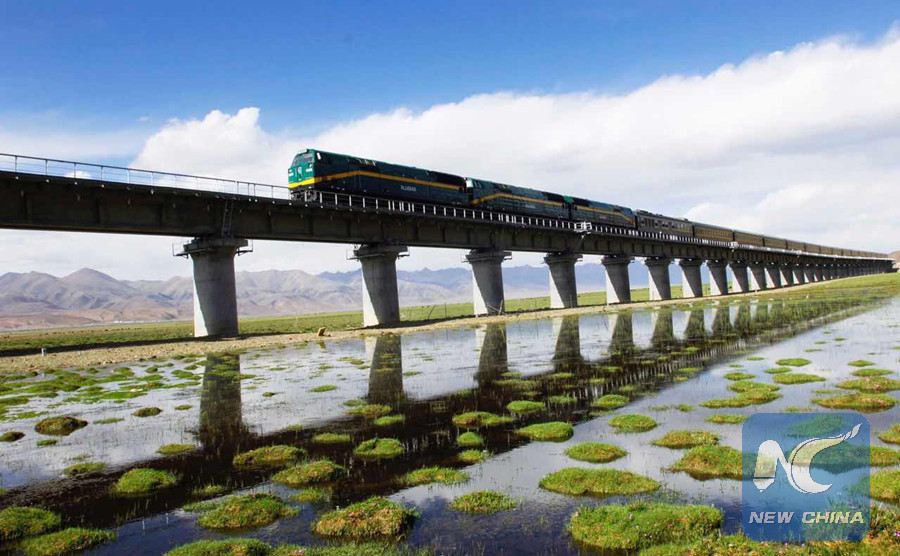
A train runs on a bridge in north Tibet on June 26, 2007. (Xinhua/Purbu Tashi)
BEIJING, July 1 (Xinhua) -- When the Qinghai-Tibet railroad was completed 10 years ago, people on the Tibetan plateau dubbed it the "railway to heaven".
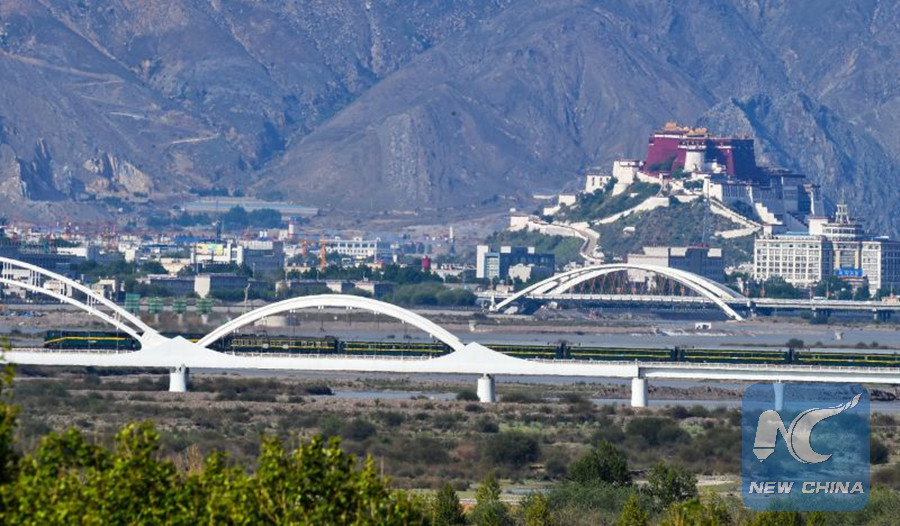
Photo taken on June 26, 2007 shows a train passes Lhasa, capital of Tibet. (Xinhua/Purbu Tashi)
The world's highest and longest plateau railway, it was the first to connect Tibet Autonomous Region with the rest of China. It links Xining, capital of Qinghai Province, to Lhasa, capital of Tibet.

Photo taken on June 22, 2016 shows a train passes Cona Lake in Tibet. (Xinhua/Purbu Tashi)
Opened on July 1, 2006, the 1,956-kilometer line passes spectacular icy peaks and reaches an altitude of 5,072 meters above sea level.
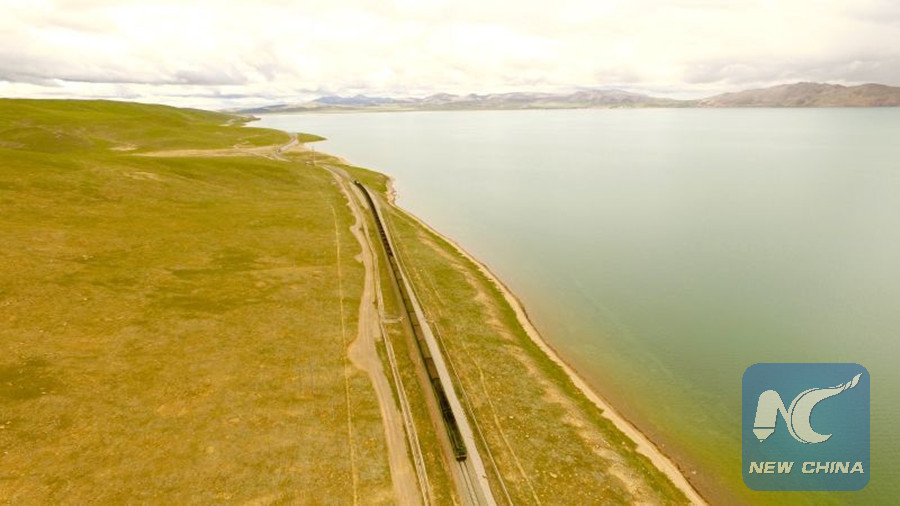
Photo taken on June 22, 2016 shows a train passes Cona Lake in Tibet. (Xinhua/Purbu Tashi)
Over 10 years, the railway has been a route to prosperity and development, as well as a pioneer in environment and wildlife protection.

Tibetan antelopes wander along a section of the Qinghai-Tibet railroad in Hol Xil on March 11, 2016. (Xinhua/Wu Gang)
Local people's incomes increased with the new influx of tourists. Some make more than 300 yuan (45.6 U.S dollars) a day during peak season.
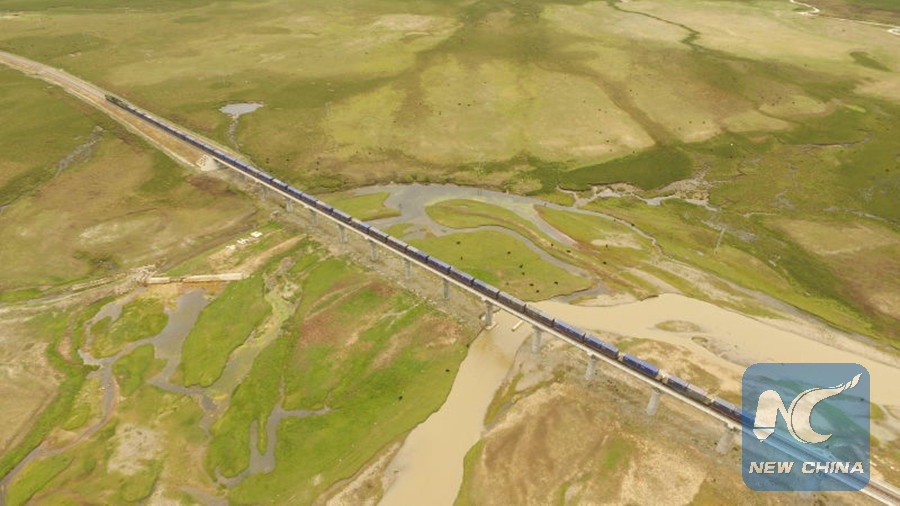
A train runs on a bridge in north Tibet on June 17, 2016. (Xinhua/Purbu Tashi)
Last year, 20.2 million tourists visited Tibet, 11 times more than before the railway opened, while tourism revenue exceeded 28 billion yuan, 15 times more than a decade ago.

A train passes heat-bars in north Tibet on June 13, 2007. (Xinhua/Hou Deqiang)
According to the Tibetan government, GDP surged from 25 billion yuan in 2005 to 102.6 billion yuan last year, growing more than 10 percent each year. Qinghai's GDP also took off, from 64 billion yuan in 2005 to 241.7 billion yuan last year.

Photo taken on June 22, 2016 shows passengers in a train on Qinghai-Tibet railroad. (Xinhua/Purbu Tashi)
The line has 18 loading stations, including industrial zones and coal bases, with trains transporting industrial salt, fertilizers, alkalis, coal, aluminum, and iron ore from the plateau.

A train runs on a bridge in north Tibet on June 26, 2007. (Xinhua/Purbu Tashi)
The impact on the plateau environment and wildlife has been better than expected.

Photo taken on June 27, 2016 shows a train runs along a river in north Tibet. (Xinhua/Purbu Tashi)
Most plateau animals are known to be sensitive to disturbance, but many have learned to cope with the changes, says Zhao Xiang, an environmental expert from Shanshui Nature Protection Center, a Beijing-based non-governmental organization.
In the past decade, 33 animal crossings have been created along the railway.
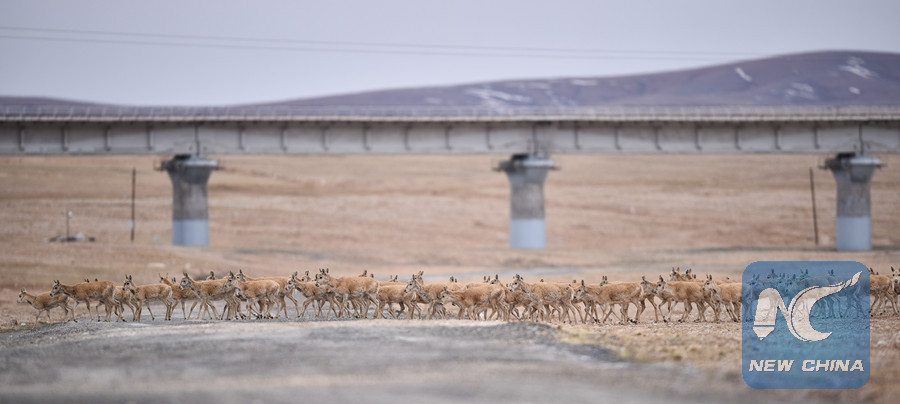
Tibetan antelopes migrate along the Qinghai-Tibet railroad in Hol Xil on March 11, 2016. (Xinhua/Wu Gang)
In June, thousands of Tibetan antelopes, a protected species, migrated through the passages to Zonag Lake at Hol Xil Nature Reserve to give birth.
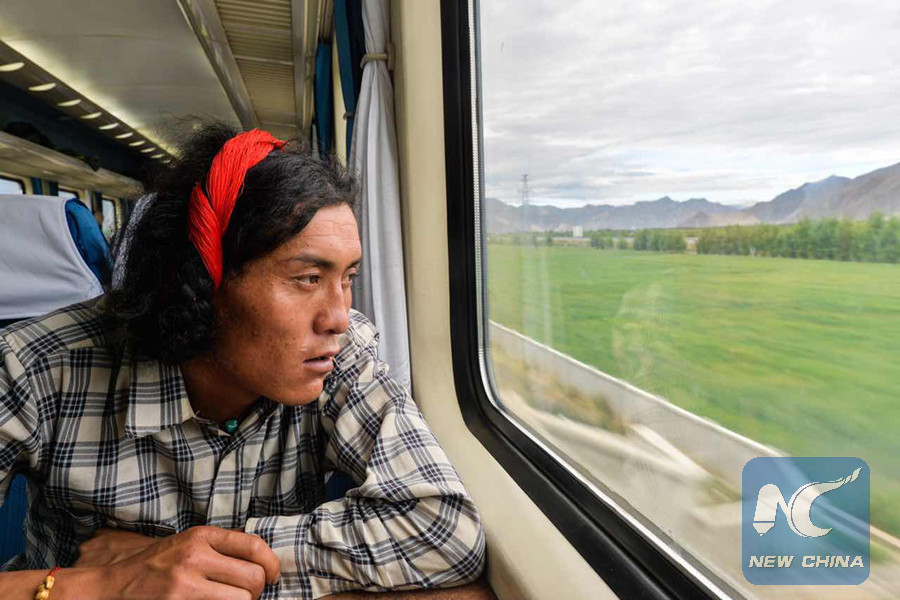
Photo taken on June 22, 2016 shows a passenger in a train on Qinghai-Tibet railroad. (Xinhua/Purbu Tashi)
Jiang Zehai, deputy manager of the Qinghai-Tibet Railway Company, says it has planted trees along 41 percent of the line, covering more than 7.7 million square meters.
A total of 15 sewage processing centers operate along the railway, he said.

